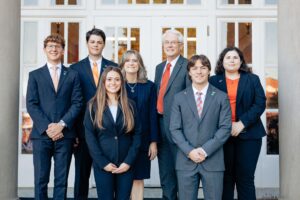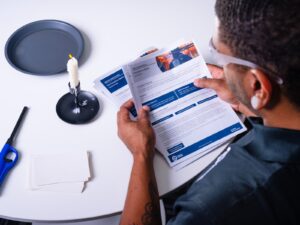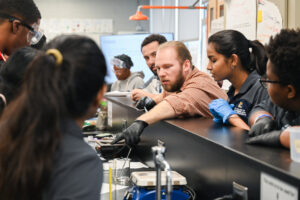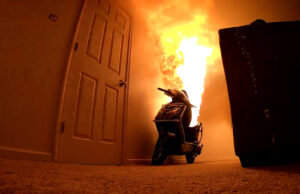ULRI Scientist Calls for Building Fire Suppression Aid Into Lithium-Ion Battery Design
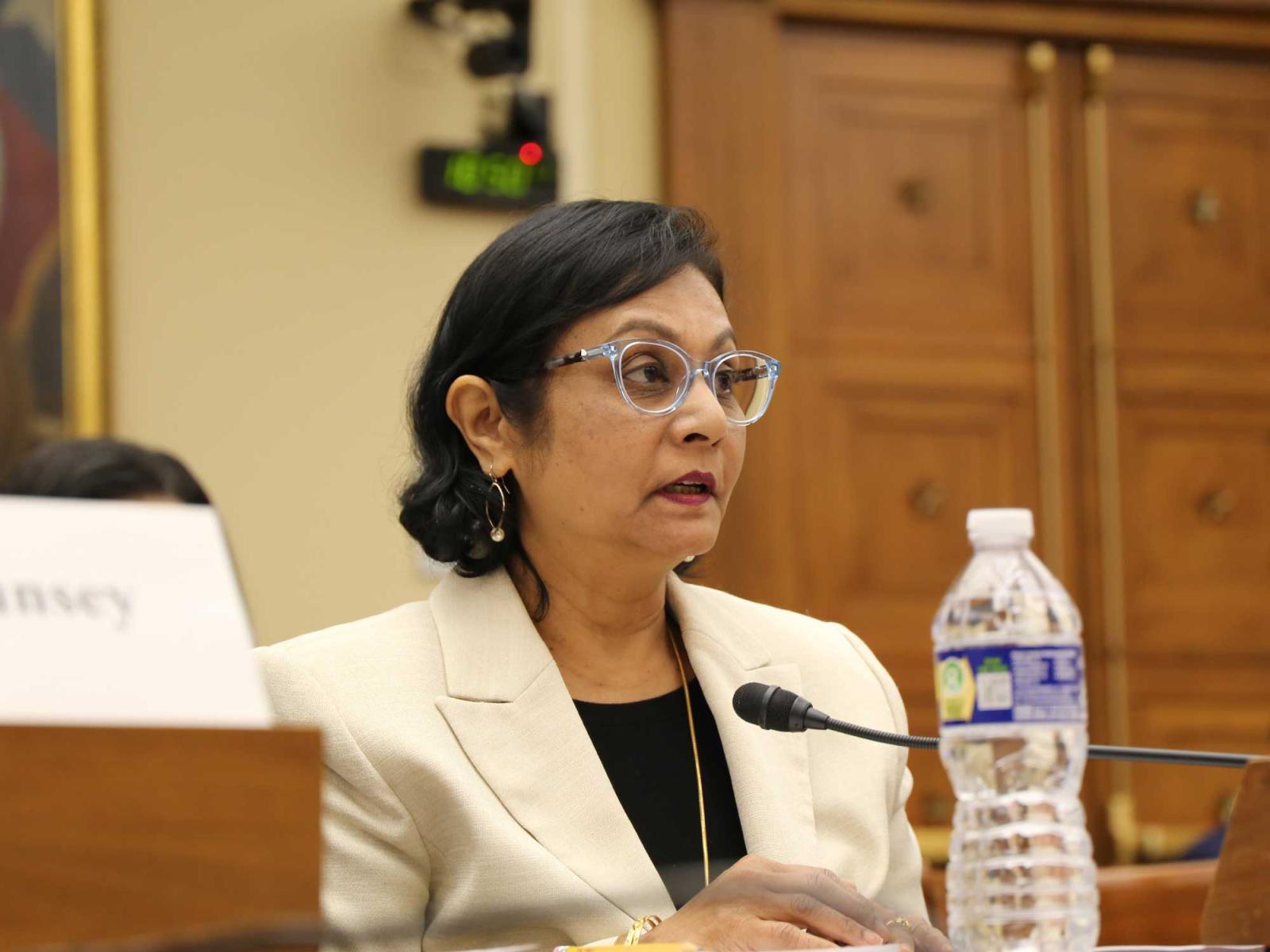
New research-based lithium-ion battery designs should be developed to provide firefighters direct access to electric vehicle (EV) batteries during car fires, said Judy Jeevarajan of UL Research Institutes (ULRI) during a recent congressional hearing.
Jeevarajan, executive director of ULRI’s Electrochemical Safety Research Institute, called for research into a lithium-ion battery design that would include an openable valve so that firefighters could douse the inside of the battery in case of fire. Existing EV batteries are typically placed within a well-sealed container designed to keep water from reaching them if the EV is driven down waterlogged roads. That prevents firefighters from reaching the battery cells that are the source of the fire and forces them to cool the car down from the outside, she said.
“And of course, you’re not really reaching the cell, so you’re not really cooling down the cells inside the battery, which can then reignite,” Jeevarajan later said. “So I think there needs to be a little more research and design and engineering that goes into this, and I think we can get to that.”
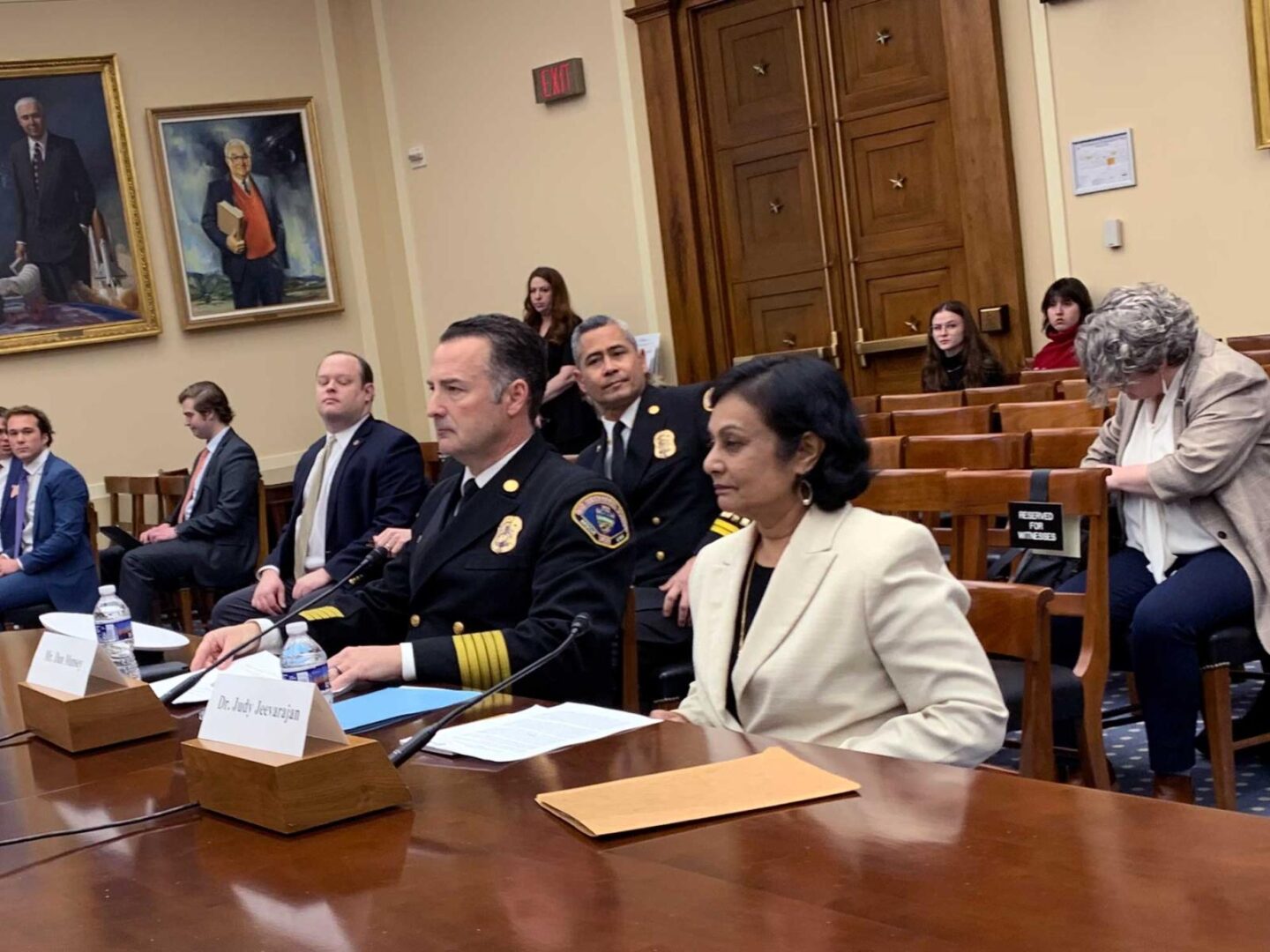
Jeevarajan spoke about the safety risks lithium-ion batteries pose for first responders as well as the research that may resolve those challenges at a Feb. 29 U.S. House Science, Space, and Technology subcommittee hearing on the dangers of EV fires for first responders. The hearing in Washington, D.C., was called to provide a better understanding of lithium-ion battery fires and advance efforts to develop guidelines, training protocols, and effective technologies to increase firefighter and first responder safety.
Dan Munsey, fire chief of the San Bernardino County Fire Protection District in California, also testified at the hearing on emerging EV fire concerns and the special training and equipment required to prepare firefighters to respond to them. Munsey focused on the importance of prevention in both his verbal and written testimony.
“We have to work with the manufacturers to ensure that we are engineering lithium-ion batteries that can withstand damage from crashes and also sustainability from fire,” Munsey said.
Asked by Rep. Valerie Foushee, D-N.C., what she believes are the biggest EV battery safety research gaps, Jeevarajan pointed to the battery design and other research she suggested in her written testimony. Also among the research highlighted in Jeevarajan’s written testimony was work on firefighter and first responder suits that would be more resistant to corrosive compounds and remote access to information on the energy that may remain in a partially damaged battery, called stranded energy.
Learn more about electrochemical safety online.
PUBLISHED
